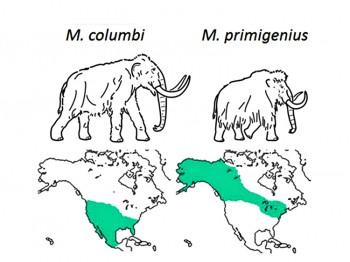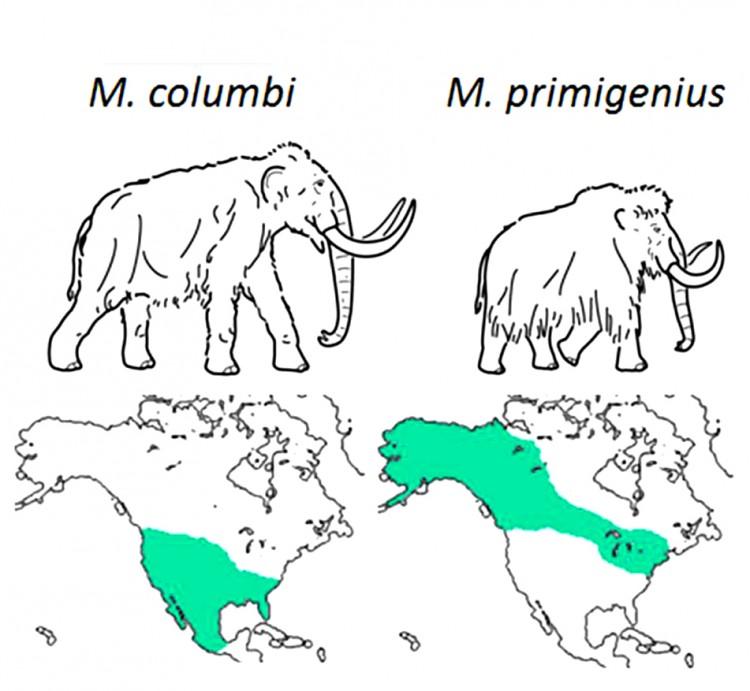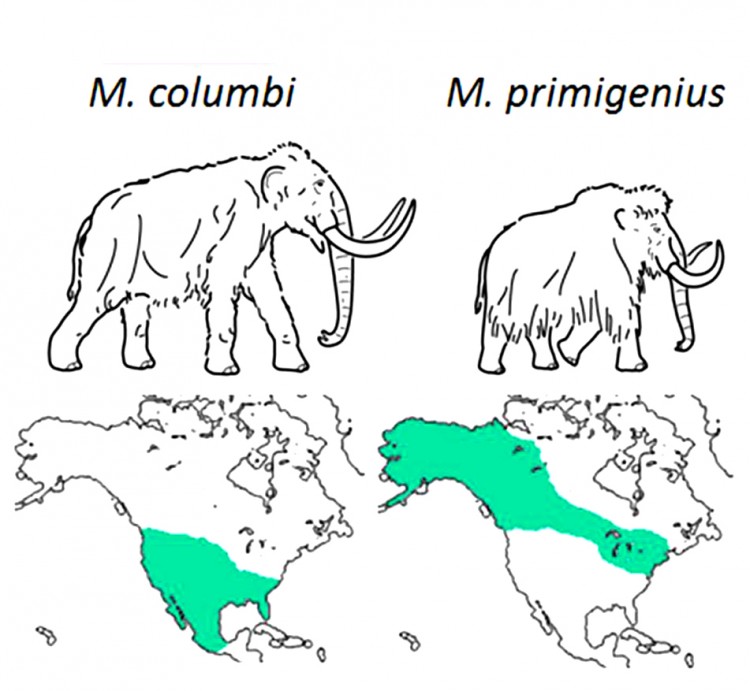Woolly mammoths may have interbred with Columbian mammoths, both previously thought to be distinct species, according to research published online in Genome Biology on May 31.
Physically and in terms of distribution, the two Mammuthus species were very different. Woollies (M. primigenius) ranged from Eurasia to northern North America, typically living in cooler regions such as the Arctic tundra, while Columbians (M. columbi) inhabited warmer, more temperate areas of North America and were around 25 percent larger or more.
Led by Hendrik Poinar at McMaster University in Canada, a team of geneticists studied two Columbian specimens, one from Utah and the other from Wyoming, and compared their mitochondrial genome sequence with that of a native North American woolly mammoth, all from around 12,000 years ago.
They found that the mitochondrial DNA from the Utah Columbian mammoth was almost indistinguishable from the sequence of the woolly mammoth.
“We think we may be looking at a genetic hybrid,” said co-author Jacob Enk in a press release. “Living African elephant species hybridize where their ranges overlap, with the bigger species out-competing the smaller for mates.
“This results in mitochondrial genomes from the smaller species showing up in populations of the larger,” he said. “Since woollies and Columbians overlapped in time and space, it’s not unlikely that they engaged in similar behavior and left a similar signal.”
The woolly mammoths may have moved south during colder periods in history, leading to overlap in the two species’ distributions.
This interbreeding may explain mammoth fossils with intermediate characteristics between the two species, sometimes referred to as M. jeffersonii.
The researchers want to look at Columbian mammoths from further south where it is believed there were never any woolly mammoths, and compare with these current samples to establish what a nonhybrid sample looks like.
All mammoth species became extinct around 10,000 years ago, except for some small island populations off the coasts of Alaska and Siberia.
Physically and in terms of distribution, the two Mammuthus species were very different. Woollies (M. primigenius) ranged from Eurasia to northern North America, typically living in cooler regions such as the Arctic tundra, while Columbians (M. columbi) inhabited warmer, more temperate areas of North America and were around 25 percent larger or more.
Led by Hendrik Poinar at McMaster University in Canada, a team of geneticists studied two Columbian specimens, one from Utah and the other from Wyoming, and compared their mitochondrial genome sequence with that of a native North American woolly mammoth, all from around 12,000 years ago.
They found that the mitochondrial DNA from the Utah Columbian mammoth was almost indistinguishable from the sequence of the woolly mammoth.
“We think we may be looking at a genetic hybrid,” said co-author Jacob Enk in a press release. “Living African elephant species hybridize where their ranges overlap, with the bigger species out-competing the smaller for mates.
“This results in mitochondrial genomes from the smaller species showing up in populations of the larger,” he said. “Since woollies and Columbians overlapped in time and space, it’s not unlikely that they engaged in similar behavior and left a similar signal.”
The woolly mammoths may have moved south during colder periods in history, leading to overlap in the two species’ distributions.
This interbreeding may explain mammoth fossils with intermediate characteristics between the two species, sometimes referred to as M. jeffersonii.
The researchers want to look at Columbian mammoths from further south where it is believed there were never any woolly mammoths, and compare with these current samples to establish what a nonhybrid sample looks like.
All mammoth species became extinct around 10,000 years ago, except for some small island populations off the coasts of Alaska and Siberia.






